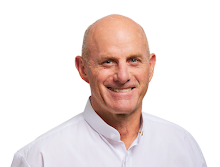In this non-fiction work, KW both informs us and tells a tale of political and corporate chicanery regarding the public milk supply.
In the interest of brevity, my learning from the book in bullet form:
- There are two kinds of cow milk: A1 and A2 (the difference being
only ONE peptide sequence).
- A1 is the most predominant milk in the public food supply around
the world (due primarily to the breeds of cattle used in commercial production).
- A significant amount of research has connected the consumption of
A1 milk to these health issues: heart disease, Type 1 diabetes, autism,
schizophrenia, coeliac disease, Crohn's disease, and other auto-immune
diseases.
- A2 milk appears NOT to cause or exacerbate these health conditions.
- The world's largest dairy-producing countries (New Zealand and
Australia) have been aware of the possibility of public health problems
associated with A1 milk for many years, but have chosen to bury or
misrepresent research that points to the problems. (Sound like the tobacco
industry or the genetically modified food folks to you?)
- Those same governments have opted for
policies that protect the milk industry rather than the public health
concerns. SURPRISE!
- Despite their insistence that A1 milk is healthy, the corporate
dairy producers in New Zealand and Australia have quietly been
"shifting" their herds to A2 cattle for several years now. (One must wonder why they would go to such trouble and expense, no?)
My two favorite quotes from the book:
- "As the Scottish author and poet Andrew
Lang put it, people often use statistics the way a drunk man uses a
lamp-post: for support rather than illumination." (p. 81)
- "Ignoring results that we do not like and
do not understand is quite common, but it is not good science."
(p 138)
Guess what kind of milk and dairy products you get
commercially in the U.S.? Yep, A1.
My biggest takeaway: One more time I am faced with
convincing data that our government(s) place the interest of the general public
good secondary to the interest of the corporations/groups which line their
pockets.
When it comes to our health and wellbeing, knowledge is power. And, we can't rely on getting the truth from those who govern us or those whose main objective is selling their "stuff" to us.





